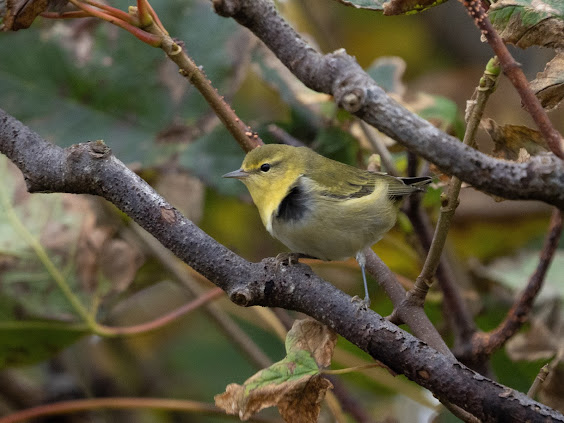On 17th October I had promised Sarah and her Sister's that I would provide a taxi service so that they were able to go to a restaurant for lunch and indulge in a few glasses, but when I switched my phone on at around 08:00 news had already broken of a mega rarity in Norfolk - a Rufous-tailed Scrub-Robin and I began to feel decidedly unsettled. I dropped the girls off and was to spend the day with Tobias - he wanted to head to the New Forest to look for Red Deer and Fallow Deer and particularly wanted to see stag's of the two species. Luckily we saw the deer fairly readily and managed to find a fantastic bellowing male Red Deer with a harem of around 35 hind's. Satisfied, Tobias and I headed home and I began to consider my options for getting to the Scrub-Robin, with Tobias encouraging me to do it! Now, I would not normally drop everything to travel for a bird, largely because of work and family commitments, but with such a mega rare bird - the first on mainland UK for 40 years, and with Sarah with her Sister's for company I had the opportunity. I booked a hotel and then headed off with Tobia's to collect the girls at 16:00, I announced that I would drop them at home and then leave for Norfolk, the plan was now secured.
I arrived at my hotel in North Elmham at around 21:30 and after a swift glass crashed for the night, now only 30 minutes from the bird. The alarm went off at 06:00 and by 07:00 I was driving to Stiffkey through heavy rain; the rain did not bode well but at least the overcast conditions probably meant that it had not departed. But, the bird looked a little tatty from images posted yesterday so the big question was 'had it survived the night?'.
I need not fear as within around 15 minutes of my arrival, and with barely time to don my boots and coat, news of the birds continued presence broke. The tide at Stiffkey was exceptionally high and the bird had been picked up flying from the saltmarsh, which it frequented yesterday, to the stubble field to the west of the car park as daylight broke. When I arrived the bird was feeding along the edge of the stubble field and showing well. Over the next couple of hours I watched this mega rarity feeding in the stubble and bordering Alexander's and occasionally flying into the adjacent hedgerow and showing itself well. Let's be honest, this bird is not a looker with it's tatty tail and drooping wing's, but what it lacks in looks it makes up for in rarity value, this is the first bird on the UK mainland since 1980's. With the following accepted records from the last century and with a further four records from the 1800's, before yesterday, there were very few UK birder's that had seen this species on home territory;
1998 - Jersey with no location given, 7th June.
1980 - Prawle Point (Devon), 9th August.
1972 - Flamborough Head (Yorkshire), 5th-6th October 1972.
1968 - Cape Clear (Co.Cork), 20th April.
1963 - Butlin's Holiday Camp, Skegness (Lincolnshire), 2nd-9th September.
1959 - Gammon Head, near Prawle Point (Devon), 20th October
1951 - Great Saltee Island (Co.Wexford), subspecies C. g. syriacus, 22nd September - 4th October.
1951- The Wicks, Dungeness (Kent), 12th September.
My eBird list for Stiffkey and additional photograph's of the Rufous-tailed Bush-Robin can be viewed here.











































